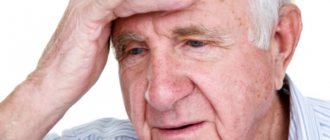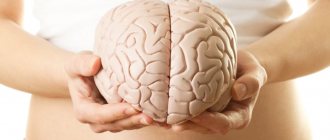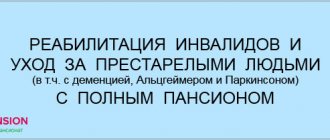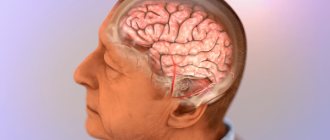Today, many people suffer from attacks of unreasonable panic fear. It can occur suddenly - in the subway, at home, among a crowd of people or completely alone, early in the morning or late at night. Such attacks are called “panic attack” or “vegetative crisis”. In fact, panic attacks and their symptoms are quite diverse, and can manifest differently in different people.
As a rule, at first there is a slight uneasy feeling. Anxiety increases in a matter of minutes - from fear a person cannot move: get up, go outside, go to work. The heart beats faster, the hands sweat, dizziness, headache, nausea, tremors occur, and the arms or legs may even become numb. It seems to a person that he is about to lose consciousness, go crazy, or even die from a heart attack or stroke, and therefore he is afraid to move, so as not to fall in front of many people or, conversely, to be left without help. And so, he can wait for 30-60 minutes until the attack of fear subsides.
“One day I was tinkering with my car in the garage as usual. Suddenly, out of the blue, I felt numbness on the left side of my face and body. I couldn't move, it was like I was paralyzed. At the same time, I began to feel very thirsty - my throat was dry. I felt hot and cold, and I just lay down in the car and waited for it to end. After 30 minutes I was released. From then on, as soon as I approached the car, I felt bad, and if I got behind the wheel, everything swam before my eyes. In the end, I even had to quit my job as a car mechanic,” patient Arthur (46 years old).
It also happens that a person who suddenly has a panic attack, on the contrary, runs as quickly as possible into fresh air because he experiences an acute feeling of suffocation - and this helps him cope with the attack.
Some patients complain that they begin to experience anxiety when faced with a specific situation. For example, when you need to drive or go to work. If a person continues an action that irritates his nervous system, the intensity of the attack increases. If he stops the action and returns home, then the anxiety gradually fades away. Thus, many people who suffer from panic attacks and their symptoms have to quit work, study, and completely change their usual lifestyle. And this method also often helps them to significantly reduce the manifestations of panic disorder, but not get rid of it completely. In addition, not everyone can afford such drastic changes in life.
What to do if you experience regular attacks of panic?
Panic attack symptoms
People with panic disorder very often do not see a doctor for a long time and do not tell their loved ones about the existing problem. As a rule, a person either thinks that there is no problem, and he himself will be able to cope with his poor health, forcibly overcoming all the signs of a panic attack, or he is embarrassed by his “weakness,” or is completely afraid that he will be “sent to a mental hospital.” This is completely unnecessary. However, it is necessary to treat sudden and regular panic fear.
“When I first had a panic attack, I had to call an ambulance. They just gave me glycine and didn't tell me anything else. After that, I went through the entire cardiology center and passed all the tests. I was told that I was absolutely healthy. My family and friends thought I was faking it. I tried not to pay attention to the attacks, reassuring myself that when I came home everything would be fine. Sometimes he deliberately drove himself into a traffic jam in order to overcome his fear. Such a nightmare was happening that you could at least abandon the car and leave. Sometimes I did just that. I would drop my car off at the metro station and come and pick it up the next day. Although before this illness I generally tolerated traffic jams calmly,” patient Pavel (41 years old).
First, let’s look at the symptoms with which you can probably come to the doctor and say: “Doctor, I’m having panic attacks. What to do?"
Psycho-emotional component of a panic attack. Symptoms and signs:
- Sudden, unreasonable attacks of fear/anxiety/panic, lasting from several minutes to several hours
- Waiting for sudden death, waiting for an attack
- Intrusive thoughts (usually related to death)
— Blurred consciousness
- Feeling of derealization (“I am separate, the world is separate”, “the world through cellophane”, “like in an aquarium”)
- Constant feeling of anxiety
— Various phobias (agoraphobia, social phobia, etc.)
— Insomnia, “nightmare” dreams
— Decreased mood, tearfulness
- Irritability, aggressiveness
“In the summer of 2014, I realized that I regularly could not fall asleep until 5-6 o’clock in the morning. The stuffy summer aggravated my condition, I constantly experienced a feeling of lack of air, my heartbeat quickened, obsessive thoughts arose in my head: “What if I’m dying?” - panic grew, but I had no strength to move or call an ambulance. I lay there like that until the morning, when my eyes closed on their own from fatigue and constant tension. This happened several times a week,” patient Elena (28 years old, manager).
Physiological component of a panic attack. Symptoms and signs:
— Dizziness, headache, heaviness in the head, noise in the head/tinnitus
- Lack of air, suffocation, shortness of breath
— Rapid heartbeat, feeling of interruptions in the heart, pain in the heart
- Nausea, abdominal discomfort
- Chills, fever, sweating
- Trembling in the arms, legs, body
- Muscle tension, numbness in limbs
— Gastrointestinal tract disorder
- Feeling tired, weak, lack of strength
“5 years ago I was unsuccessfully treated with antibiotics and after that I started having stomach problems. All these years I suffered from constant diarrhea. I contacted a parasitologist, gastroenterologist, immunologist and other specialists. Tests and clinical studies did not reveal any diseases. I tried to be treated with probiotics and prebiotics, but to no avail. Other symptoms also began to bother me: heaviness in the head, tension in the back and neck, anxiety for no reason, fear for one’s health, sometimes the heart was pounding wildly, in the morning after sleep there was slight dizziness and, of course, constant fatigue and weakness,” patient, Andrey (31 years old).
Important symptoms of panic attacks are also their systematicity and regularity. The interval between panic attacks can vary from a few minutes to several days or months, but their regular occurrence indicates that you are suffering from a panic disorder.
Panic attack. Emergency self-help.
First, learn how to manage your panic attacks yourself to control them and reduce the intensity of your panic attack symptoms.
Try practicing breathing techniques.
Breathe through your diaphragm (belly), in through your nose and out through your mouth slowly and calmly. For example, for 5 counts – inhale, for 10 – exhale.
“Some patients benefit from progressive muscle relaxation. If your muscles are very tense during a panic attack, try tightening your facial muscles: tense your jaw for 8 seconds - then relax, tense your lips for 8 seconds - relax. Repeat the exercise with your arms (palms, forearms) and switch to the next muscle group, for example, the calf muscles, the feet. Alternate tension and relaxation of all parts of the body will help relax the muscles and distract thoughts,” recommendations of a neurologist-vegetologist (“Clinical Center for Autonomic Neurology”).
During a panic attack, try to distract yourself and not think about the symptoms that are bothering you. Use psychological techniques. Visualize some place where you felt good: a house, a vacation spot, a cottage, a forest, a sandy beach - whatever your heart desires. And imagine in detail the entire environment that surrounds you there: a soft chair, a fluffy cat, the smell of pine trees, the crunch of branches under your feet, birdsong, warm sand, etc. Think in advance about where it would be better for you to “go” when you have another panic attack in order to distract your thoughts from its symptoms.
Keep a diary of panic attacks that you can refer to in critical situations. This way you can remind yourself that there is nothing to be afraid of, and the next panic attack will soon pass.
Getting rid of panic
- Antidepressants and benzodiazepines
- Often psychotherapy (eg, body-focused therapy, cognitive behavioral therapy)
Some patients recover without treatment, especially if they repeatedly experience situations in which the first attacks occurred. In other patients, especially if left untreated, panic disorder has a chronic course with fluctuating symptom intensity.
Treatment usually helps control symptoms. If avoidance behavior has not developed, reassurance, information about the anxiety, and encouragement to continue returning to the places where the panic attacks occurred are therapeutic. For patients with long-standing disorders that include frequent seizures and avoidance behavior, treatment will likely require drug therapy combined with more intensive psychotherapy.
Drug therapy
Many medications can prevent or significantly reduce anticipatory anxiety, phobic avoidance, and the number and intensity of panic attacks
- Antidepressants of different groups - selective serotonin reuptake inhibitors (SSRIs), norepinephrine reuptake inhibitors (SNRIs), tricyclics (TCAs) and monoamine oxidase inhibitors (MAOIs) - are equally effective. However, SSRIs and SNRIs have the potential advantage of having fewer side effects than other antidepressants.
- Benzodiazepines: These anxiolytics act faster than antidepressants, but are more likely to cause physical dependence and side effects (drowsiness, ataxia, and memory problems). For some patients, long-term use of benzodiazepines is the only effective treatment.
- Antidepressants in combination with benzodiazepines: at the beginning of the course, these drugs are sometimes used in combination; when the antidepressant is effective, the benzodiazepine dose is slowly reduced (although some patients respond to combination therapy alone).
Panic attacks often return when medications are stopped.
Psychotherapy
Various forms of psychotherapy are effective.
Therapy interventions in which patients confront their fears help reduce fear and complications caused by phobic avoidance. For example, patients who fear they will pass out during a panic attack spin in a chair or hyperventilate until they feel dizzy or faint.
Cognitive behavioral therapy involves teaching patients to recognize and control their distorted thinking and false beliefs and to change their behavior so that it is more adaptive. For example, if patients describe an acceleration of their heart rate, difficulty breathing in a certain situation or place, and fear that they will have a heart attack, they are taught the following:
- Don't avoid such situations
- Understand that their fears are not justified
- Use slow, controlled breathing or other techniques that promote relaxation
Panic attacks. Difficulties in diagnosis.
People suffering from the symptoms of panic attacks usually do not know where to turn. They visit the offices of a therapist, cardiologist, endocrinologist, psychiatrist, psychologist, but doctors do not detect any disturbances in the functioning of the body. Of course, it is advisable to undergo all possible examinations and pass all the necessary tests in order to exclude the development of serious physiological abnormalities. However, if, in the end, they tell you that you are absolutely healthy, but anxiety, tachycardia, insomnia and other symptoms continue to torment you, then most likely you suffer from panic disorder, which means the problem lies in a disruption of the autonomic nervous system , which can only be identified by an experienced neurologist-vegetologist.
Some patients with signs of panic attacks are diagnosed with vegetative-vascular dystonia (VSD) and told that they will have to live with such symptoms all their lives, alleviating them with medications: antidepressants and tranquilizers.
“I went to all the doctors because there were a lot of symptoms: my heart, shortness of breath, blood pressure, my stomach, bones, muscles ached, I felt constant anxiety. At first, rare panic attacks grew into a daily norm. The neurologist prescribed Coaxil, but the pills made me feel worse. I drank Coaxil for three months and barely got off it. Then the therapist prescribed me adaptol. It made me feel better, but only while I was drinking it, and as soon as I stopped drinking, everything started all over again. Everything was useless until I learned from friends about the “Clinical Center for Autonomic Neurology”,” patient, Arthur (46 years old).
The deep misconception that VSD and panic attacks cannot be treated can be dispelled if you visit a doctor who specializes specifically in disorders of the autonomic nervous system. Panic attacks can be treated and diagnosed! The main thing is to know where and how this can be done.
Panic attacks. Modern diagnostic methods.
Only a qualified neurologist-vegetologist can diagnose panic disorder, which manifests itself as panic attacks, identify its symptoms and prescribe optimal treatment.
At the initial examination, the vegetarian doctor must examine the patient’s normal reflexes, his muscular system, sensory organs, cognitive functions (memory, speech, perception), assess the general psycho-emotional state of the patient, taking into account all his complaints in order to collect a complete picture of the disease.
Next, there are several methods for diagnosing autonomic nervous disorder. One of them is the study of heart rate variability.
The patient performs a simple load: first he lies on his back, and after a few minutes he gets to his feet. In this way, we simulate a standard everyday situation when the minimum load is placed on our body. During this time, sensors attached to the patient's chest record the rhythm of his heart, and the doctor then compares the changes in rhythm in both positions. Such a study shows how adapted the human body is to the usual minimum load, which our autonomic nervous system normally copes with every day without the slightest difficulty.
How it works?
In a healthy state, our body responds adequately to any “stress”, any load (mental, physical, emotional). Therefore, when a healthy person gets up, the sympathetic part of the autonomic nervous system is activated in his body and the hormone adrenaline is produced, which means the heartbeat quickens. When a person lies down, his body should normally be in the mood for rest and relaxation. At the physiological level, this manifests itself as follows: the parasympathetic department of the autonomic nervous system becomes active and the hormone acetylcholine is released, which extinguishes the activity of adrenaline, and a phase of relaxation and replenishment of the body’s reserves begins.
But in patients with symptoms of panic attacks, an abnormal change in heart rhythms is observed: that is, when a person lies down, his pulse quickens and becomes faster and faster. That is, when a person gives his body the command to tune in to rest, the body understands the opposite - and prepares to run a short distance race. This is why people with disorders of the autonomic nervous system so often cannot sleep at night and never feel rested and alert.
Thus, the doctor concludes that the harmonious functioning of the sympathetic and parasympathetic parts of the nervous system is disrupted. This means you can move on to the next stage of the examination.
Among the innovative methods for diagnosing panic disorder are studies of the autonomic nervous system using infrared thermography. In an infrared image, a thermal imager clearly shows in which nodes (ganglia) of the autonomic nervous system the work is disrupted. It is with these vegetative nodes that the neurologist-vegetologist will subsequently work.
“Serious scientific research over the last decade has shown the high reliability and reliability of thermography. This allows this method to be used in medical practice to make a diagnosis in complex cases,” James Mercer, Professor, President of the European Thermography Society (EAT).
| Fig. 1 – Thermal image before treatment of panic attacks and VSD – the functioning of the vegetative node in the cervical region is disrupted (colors – red and orange) | Fig. 2 - Thermal image of the same patient after treatment of panic attacks and VSD - the temperature in the vegetative node of the cervical spine has returned to normal (colors - blue and green) |
After treatment, you can take a repeat infrared photo, in which you will notice progress from the completed course. Areas with abnormal temperatures (bright red or dark blue) will change color in the image because their temperature regime is closer to normal.
Diagnostics
- Clinical criteria
Panic disorder is diagnosed after medical disorders that may mimic anxiety have been ruled out and when symptoms meet the diagnostic criteria in the Diagnostic and Statistical Manual of Mental Disorders, 5th edition (DSM-5).
Patients must have recurrent panic attacks (frequency may vary) in which ≥ 1 attack was followed by one or both of the following for ≥ 1 month:
- Persistent worry about recurrence of panic attacks or about their consequences (for example, fear of losing control or going crazy)
- Maladaptive behavioral responses to panic attacks (for example, avoidance of being around other people, whether during sports such as exercise or social events, to try to prevent recurrence of the attacks)
Panic attacks symptoms and treatment
To successfully treat panic attacks, an integrated approach is required; one of the modern treatment methods is complex physiotherapy. The treatment is aimed at the root cause of the disorder, which is rooted in the physiological disruption of the body. Psychotherapy can also be used as a method of treating panic attacks, but only as an auxiliary link. In some cases, a psychotherapist can alleviate the condition and reduce the severity of panic neurosis.
One of the clinics in Moscow that specializes directly in disorders of the autonomic nervous system is the Clinical Center for Autonomic Neurology. The clinic’s doctors have extensive experience working with panic attacks: they know how their symptoms manifest themselves and what treatment will be optimal in a given case. As part of a comprehensive physiotherapy course, you can be offered:
— undergo a course of intravenous laser therapy
— infrared laser therapy
— magnetic therapy
— as well as a course of color pulse correction of suprasegmental autonomic disorders (color therapy)
All methods are aimed at working directly with damaged vegetative nodes.
The targeted effect on the nerve nodes in its effect on the body is reminiscent of acupuncture in oriental medicine (acupuncture), but the action of the laser is much more accurate and is based on science, and not on ancient intuitions, especially since it is supported by thermal imaging images that show the localization of the vegetative node in the human body accurate to the millimeter.
“I underwent 2 courses of acupuncture with symptoms of panic attacks. After the first course, which lasted a month, I felt better - I just sighed. But a month later I had to return. Another month after the second course, my body completely returned to its previous deplorable state. The effect faded away again. Acupuncture gave me only temporary relief. The effect of the laser was incomparably more effective,” patient Alexander (43 years old).
For most patients, it is enough to undergo one course of comprehensive physical therapy to feel significantly better, and after a recovery period that lasts from 4 to 6 months, to completely get rid of all symptoms of panic attacks. In more advanced cases, several courses may be required. However, noticeable improvements are noticeable after the first treatment session.
“During laser therapy sessions, I felt relaxed and even fell asleep. After the first sessions, the anxiety noticeably subsided and my head cleared. Panic attacks after completing the course of treatment became rare and short-lived. There was one case of exacerbation in the subway, but the doctor warned me that this was possible during the recovery period. I happily completed the second course of treatment a year later and now I feel even better than when I didn’t have panic attacks yet,” patient Sergei (34 years old).
Exercise when working with increased anxiety using the method of emotional-imaginative therapy
Listen to your body and find the place in it where you feel your anxiety. Happened? Great! Now imagine your anxiety in the form of some image (whatever comes to mind first is correct). And now, attention, I’m revealing a secret: your images can talk! Yes Yes! Ask the image what it is afraid of and ask what will help it feel safe. He will definitely answer you! (Remember that the first thoughts are the most necessary). Answered? Great! Now imagine the image of this “safe” and give it to the image of anxiety. Is something going on? If not, then you can work through your condition in an individual consultation with a psychologist. If yes, then continue to observe and you will see that the image of anxiety has changed and he is no longer afraid, but joyful and calm. And accept the new image into the body instead of the old one and observe how the body reacts. If the body reacted with warmth and relaxation, then congratulations, you managed to work through this level of anxiety and achieve a resourceful state. If not, it doesn’t matter; a psychologist will help you refine this exercise and achieve pleasant relaxation. It is important to understand that it is necessary to work with the underlying causes of anxiety and panic attacks. Sign up for personal consultations and you will be pleasantly surprised by the changes achieved.
Our specialists have extensive experience working with anxiety and panic attacks. Make an appointment by calling hotline 8. A psychotherapist and clinical psychologist will provide assistance and give recommendations during personal meetings or online sessions.
The author of the article is clinical psychologist Ekaterina Knoblokh
Similar articles:
The best narcologists in Moscow
The 12 step program is recognized as the best in the fight against addiction
How to make it easier to quit your hairdryer
Can an addict stop using drugs forever?
How drug addicts use the drug “Lyrica”
One comment on “Anxiety disorders and panic attacks in drug and alcohol addiction”
- Mila:
July 8, 2021 at 04:54 pm
Eltacin is a mild nootropic that helps with PA
Answer










